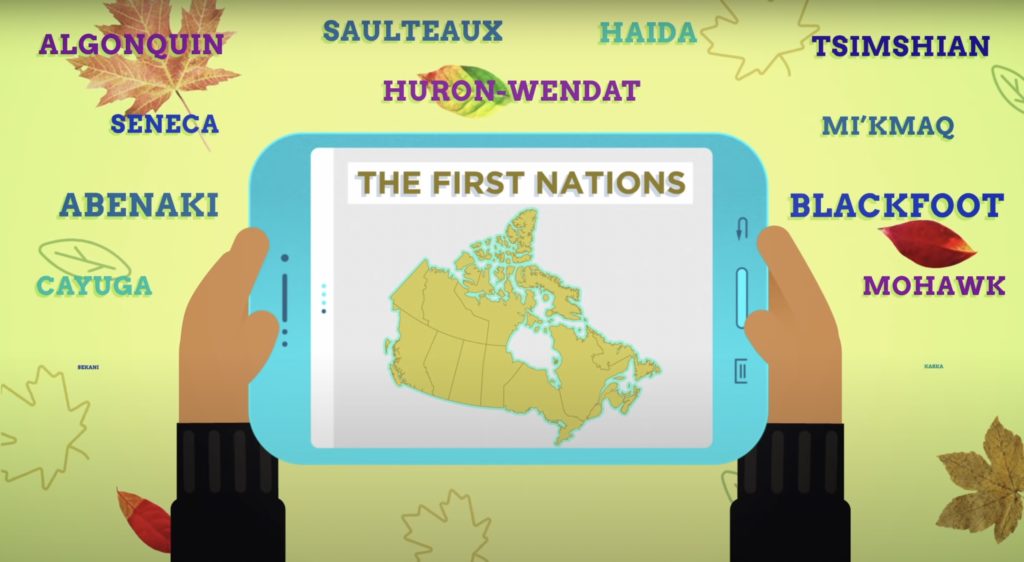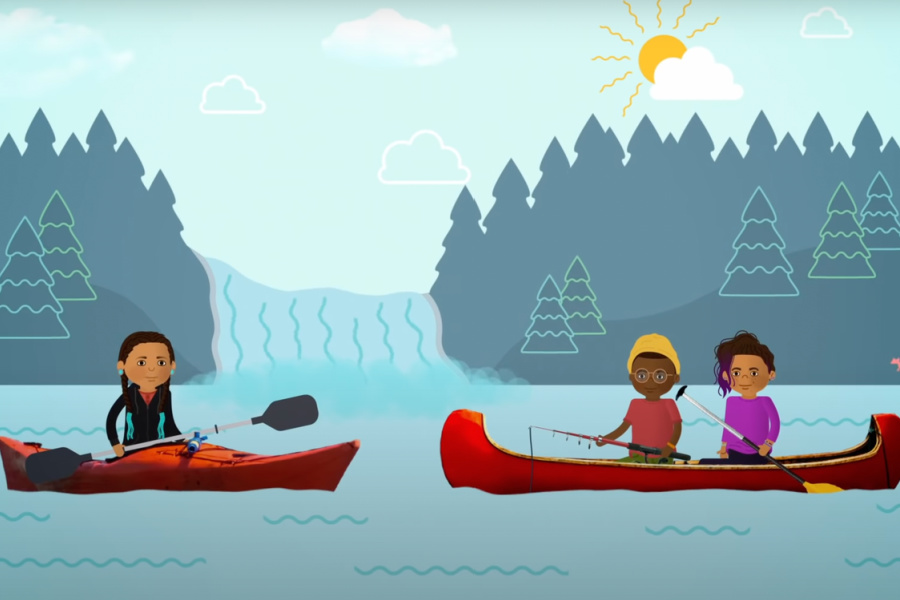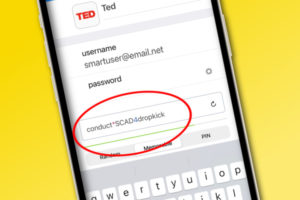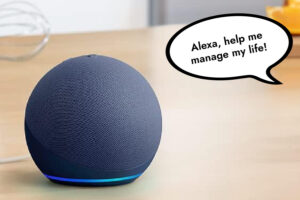On Indigenous People’s Day, a lot of kids may be asking us to explain what Indigenous means. It’s not the kind of word that’s in a lot of kids’ day-to-day vocabularies — or at least not yet. And parents may have trouble explaining what it means, how it’s different from terms like “Native” or “First Nation,” when to use each (or not)…and above all, why it matters.
Tech to the rescue.
Related: Find your own town on this amazing, interactive Native Land map
 Images: CBC Kids via YouTube
Images: CBC Kids via YouTube
A couple years back, in our post of resources for parents to help explain Indigenous People’s Day, of we were so happy to find this smart, animated CBC Kids video on YouTube called “The Word Indigenous, Explained.”
While lots of videos for kids either feel dated in their perspectives, or leave out important discussions entirely, I find this to be a helpful, short, simple and accurate video for young kids simply looking for a definition.
I think if kids take away anything beyond “what does Indigenous mean” here, they will be fascinated to learn (if they haven’t already), that The First Nations in Canada alone include 50 different Nations, each with their own distinct culture, language, and beliefs.
What better way for kids to truly grasp future history lessons on the European colonization of what’s now North America, and how it wasn’t a single “Native” culture that was decimated but dozens of unique cultures made up of tens of millions of human beings.
And because kids are great at asking “why” after they’ve asked “what,” we’ve got your back. For even more helpful resources for kids of all ages that get into more detail, check our article on resources for help kids understand Indigenous People’s Day. It’s been updated for 2021, and is filled with books, websites, articles and more that can help us all along in our understanding of the accurate history of the original people of our continent who we’re celebrating today.





